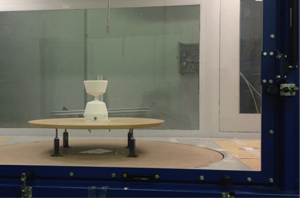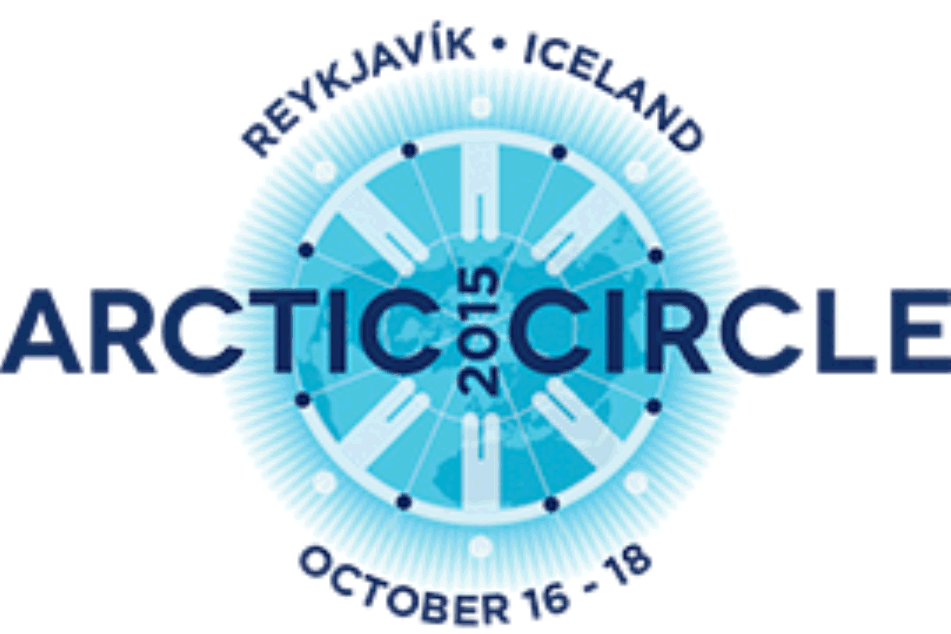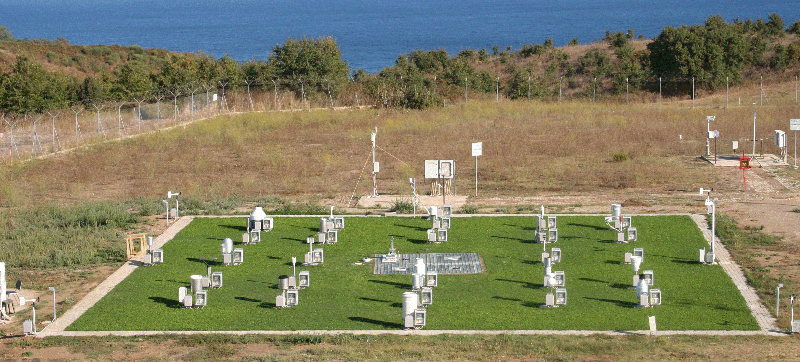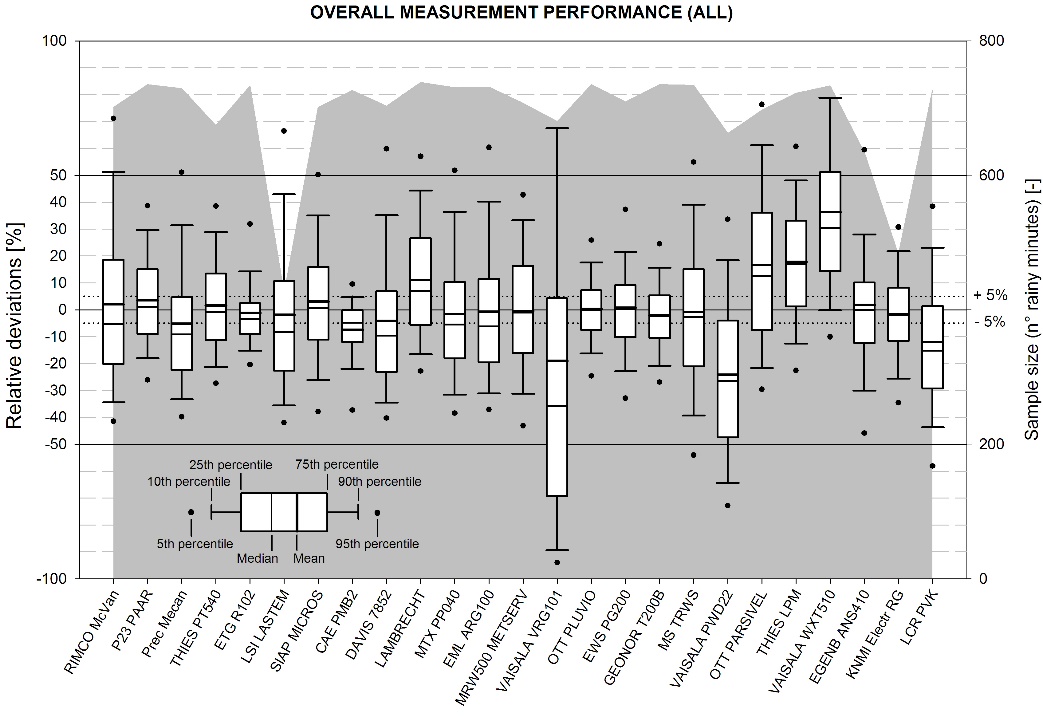
Special Issue:
"Rain sensors"
Guest Editors:
Prof. Filippo Giannetti
Prof. Luca G. Lanza
Deadline for manuscript submissions:
30 September 2021
Special Issue:
"Precipitation Measurement Instruments: Calibration, Accuracy and Performance"
Guest Editor:
Prof. Luca G. Lanza
Deadline for manuscript submissions:
30 September 2020
New publication:
Cauteruccio et al. (2020)
The role of free-stream turbulence in attenuating the wind updraft above the collector of precipitation gauges.
Journal of Atmospheric and Oceanic Thechnology, 37, pages 103-113.
(.pdf)
The first european standard on the accuracy of precipitation measurements instruments has been published as EN 17277:2019 "Hydrometry. Measurement requirements and classification of rainfall intensity measuring instruments"
kick-off meeting of the new EURAMET/EMPIR project INCIPIT "calibration and accuracy of non-catching instruments to measure liquid/solid atmospheric precipitation" hosted by the Lead Centre in Vigna di Valle.
The Lead Centre partecipated to the WMO/CIMO Technical Conference on Meteorological and Environmental Instrument and Methods of Observation in Amsterdam
The Lead Centre partecipated to the JMA/WMO Workshop on Quality Management of Surface Observations- RA II WIGOS Project in Tokyo
The Lead Centre partecipated to the Metoemet final meeting in Moncalieri (Tourin), presentig the results performed in the Research Excellence Grant (REG3) of the Meteomet2 project.
The Lead Centre partecipated to the EGU 2017 conference with poster presentations on wind tunnel experiments and precipitation measurements issues.
The Lead Centre will participate to the WMO TECO 2016 conference and the International Conference on Metrology for Meteorology and Climate with poster presentations on the more recent research developments and ongoing collaborations.

Wind tunnel experiments are currently under execution at the DICCA laboratories to provide information on rain gauges performance under turbulent winds and validation of CFD numerical analysis.
Oral presentation at the AMS annual meeting in New Orleans. Download the presentation.

Oral and poster presentations at the UrbanRain workshop (Pontresina). Download the short paper on the jointed CFD activity with EML.
The Lead Centre has recently signed a new research agreement with LSI LASTEM to study an improved rainfall intensity sensor compliant with UNI 11452:2012.

Presentation at the Arctic Metrology breakout session of the Arctic Circle 2015 Assembly.
New publications about the Lead Centre CFD studies available on AMS journals.

Installation and set-up of aerodynamic gauges and a laser disdrometer at the Vigna di Valle field site.
The WMO Field Intercomparison of Rainfall Intensity (RI) Gauges was conducted from 1 October 2007 to 30 April 2009, in the Centre of Meteorological Experimentations (ReSMA) of the Italian Meteorological Service, in Vigna di Valle, Italy. It was organized following the request of users and the recommendation of CIMO-XIV.
This intercomparison hosted 25 different rainfall intensity gauges. The majority of these instruments were catching type gauges comprising tipping-bucket gauges, weighing gauges and one water level gauge. Non-catching rain gauges were represented by optical and impact disdrometers, one optical / capacitive gauge and one microwave radar gauge. This intercomparison was unique as to the number of instruments and variability of techniques used.

The Final Report of the Intercomparison is available here, and is published as IOM Report n. 99 (TD 1504) by WMO/CIMO.
The main objective of the intercomparison was to intercompare the performance of in-situ rainfall intensity instruments of different measuring principles, with special consideration given to high rainfall intensities. Further objectives were to offer advice on improvements of instruments and precipitation measurements.
Prior to installation in the field, all reference gauges and the catching type instruments were calibrated in the WMO recognized laboratory at the University of Genoa. Calibration procedures were based on recommendations of the previous WMO Laboratory Intercomparison of RI Gauges (2004-2005) which were further developed to allow an assessment of the 1-minute measurement uncertainty under constant flow conditions. Additionally all catching gauges were subject to a step response test to assess their dynamic response.
In the field, all gauges were compared with a RI composite working reference consisting of a set of three reference rain gauges in a standard pit.
The results of the intercomparison confirmed the feasibility to measure and compare rainfall intensities on a one minute time scale and provided information on the achievable measurement uncertainties. Due to the very high variability of rainfall intensity, the time synchronization of the instruments is crucial to compare their measurements and to design the measurement systems, as two successive 1-minute rainfall intensity measurements can differ much more than the measurements of two well synchronized instruments.

It was recommended that rainfall intensity measurements be further standardized at an international level and based on knowledge obtained from this intercomparison to allow the users to obtain homogeneous and compatible data sets. The procedure adopted for performing calibration tests in the laboratory should become a standard method to be used for assessing the instruments’ performance. Acceptance tests could be based on the adopted laboratory procedures and standards. A classification of instrument performance should also be developed to help users in selecting the proper instrument for their applications.
The intercomparison results confirmed that uncorrected tipping bucket rain gauges should be corrected. Very good results can be achieved by software correction methods. Catching gauges that do not use a funnel are sensitive to environmental factors, affecting the measurements of some instruments. It was found that proper techniques can be used to reduce the noise in the measurements.
It was found that manufacturers need to improve their documentation, and users should contact manufacturers for additional guidance, as how to best operate their instruments for various applications.
The Intercomparison high quality data set (1-min rainfall intensity data) constitutes an important scientific resource that is now available from this site.